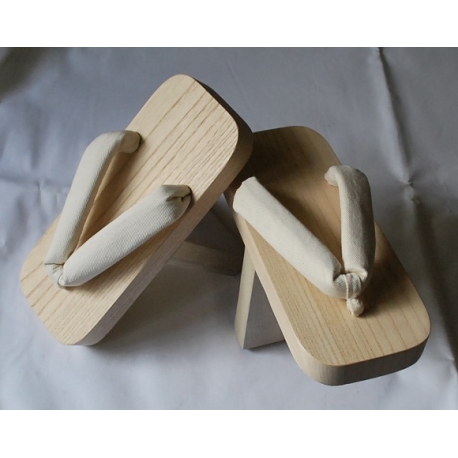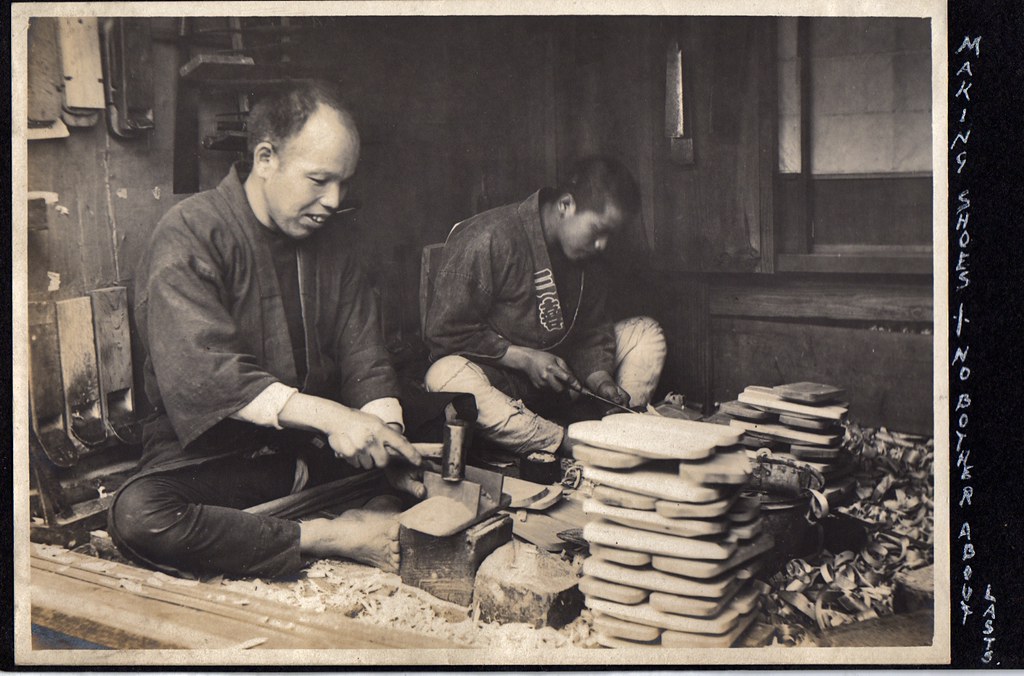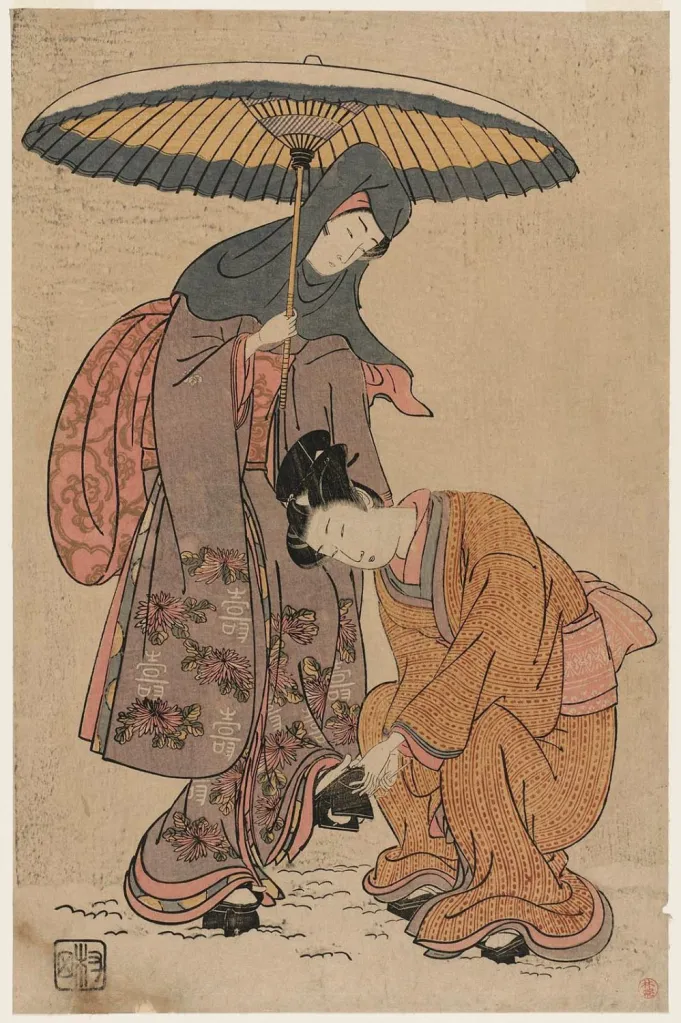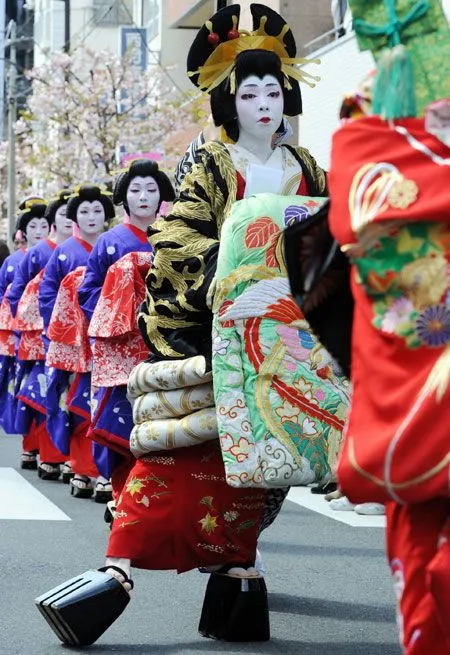

Overview
Geta are a traditional wooden sandal usually worn with Kimono or Yukata. The shoes are easily identifiable by its three components, the wooden base, the teeth of the shoe, and the cloth strap. Initially made for working purposes, the shoe is now worn in a sense of fashion and tradition.
Appearance
Geta are most notable for the sound the wooden shoe makes when an individual is walking. This sound is created by the wood of the sandal coming into contact with a hard surface. Geta can be made out of various types of wood, with the price ranging based on the type. The most popular wood that Geta are traditionally made with is Cedar because of the beauty and soft-grain of the wood. The three components of Geta are Dai, Ha, and Hanao. The Dai is the flat base of the shoe. Ha, also meaning teeth, are the blocks underneath the sole. Common Geta have two teeth, but there are styles of Geta with one or three teeth as well. Lastly is the Hanao which is the V-shaped cloth on top of the shoe.


History
Geta date back to the Yayoi period (300b.c.e.-300c.e.). During this time the shoes were used for work purposes and referred to as Ta-Geta because they were used in the rice fields to aid with mobility. These Geta lacked Ha and the Hanao was made with straw rather than cloth. Another style of Geta known as Nezura Geta was worn by fishermen. These shoes had spiked bottoms that allowed them to hunt fish. During the Heian period (794c.e-1185c.e.) Geta were worn less often, and replaced by the Zouri, straw sandals, instead. However, it was during the Edo period (1603c.e.-1868c.e.) that the shoe faced a revival. During this period people began wearing the shoe for fashion, as well as for work purposes. With the surge in popularity, there were over 200 styles of Geta at the time. Into modern times, we continue to see the shoe being worn for fashionable purposes.
Cultural Association
The main function of Geta was to prevent the wearer’s feet from becoming dirty. Up until the Edo period, the shoes were primarily worn when it rained. The height from the shoes helped prevent the wearer from dirtying their feet. Geta are only really unsuitable for snow because it usually gets stuck in the teeth of the shoe, however Geta were also worn in the snow during the earlier periods. In a cultural context, people often attribute Geta with Japanese Oiran, Geisha, and Maiko. During the feudal era of Japan, Geta were worn by high-ranking courtesans known as Oiran. These Geta known as Koma Geta, or Mitsu Ashi, were incredibly tall and usually lacquered. Oiran were the highest level of entertainers, and aside from their looks, they could be distinguished by the act of wearing the Geta with no socks. Both Geisha and Maiko would wear their Geta with socks, however Oiran would not, even in the winter months. Maiko, the lowest level of courtesan, wore a special type of Geta known as Okobo as they were training to become Geisha, or even Oiran.


How to Wear Geta
References